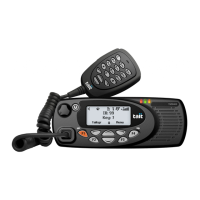6 Introduction TM9400 Specifications Manual
© Tait Limited November 2016
Performance Figures
TM9400 specifications were derived by measuring typical performance
and then averaging that measurement across multiple points in each RF
band.
In contrast, all figures quoted as regulatory requirements are guaranteed
minimum performance figures for equipment operated at standard room
temperature, +71.6°F to +82.4°F (+22°C to +28°C) and standard test
voltage (13.8VDC).
Performance figures quoted as ‘typical’ are generally better than
performance figures quoted as ‘guaranteed minimum’.
Definition of NB and WB
The terms ‘narrow bandwidth’ and ‘wide bandwidth’ are used as follows:
Frequency Bands
Tait uses a unique alpha-numeric code to represent each frequency band.
The frequency codes currently used with the TM9400 series of radios are
listed below. These codes are used throughout this manual.
Term Abbreviation
Channel
spacing
Modulation
100% deviation
Narrow bandwidth NB 12.5kHz/15kHz ±2.5kHz
Wide bandwidth WB 25kHz/30kHz ±5kHz
Frequency code Frequency band
B1 136MHz to 174MHz
H5 400MHz to 470MHz
a
a. H5- and H7-band radios are also approved for operation on the Australia
and New Zealand Citizens Band frequencies (476.425 to 477.4125MHz).
Citizens Band performance limits apply to radios used in this band.
H7 450MHz to 520MHz
a
K5 757MHz to 870MHz (Tx)
757MHz to 776MHz (Rx)
850MHz to 870MHz (Rx)

